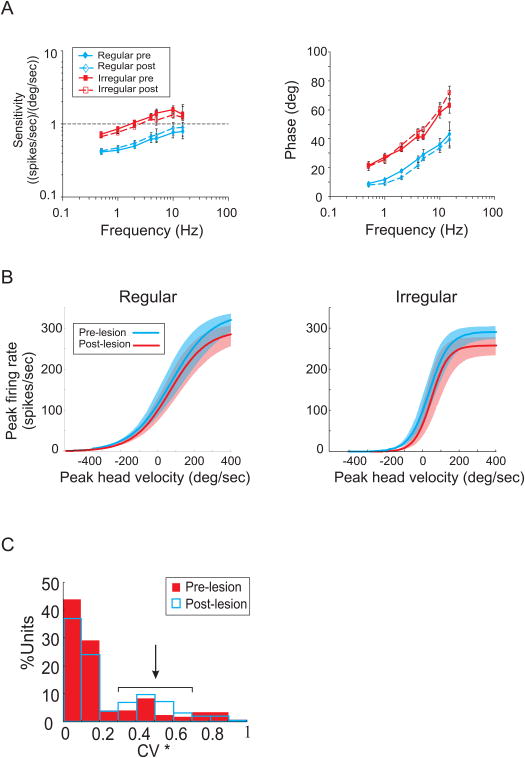Figure 2.
Response of vestibular-nerve afferents innervating the semicircular canals before and after unilateral labyrinthectomy in macaque monkeys. A. Response of afferents as a function of frequency. Sensitivity and phase lead(relative to velocity) of responses during sinusoidal rotations with frequencies of 0.5 to 15 Hz (±50°/s) before (continuous lines, filled symbols) and after (dashed lines, empty symbols) labyrinthectomy. B. Average response of irregular and regular afferents during rotations with velocities of up to 500 °/s, before (blue lines) and after lesion (red lines). Light colored areas represent the SE of the responses. Differences in each group were not significant under the two conditions. C. Comparison of the distribution of afferents based on the regularity of the resting discharge (measured by the normalized coefficient of variation, CV*) before (filled red bars) and after (empty blue bars) lesion. There was a slight increase in the percentage of irregular afferents following lesion.

